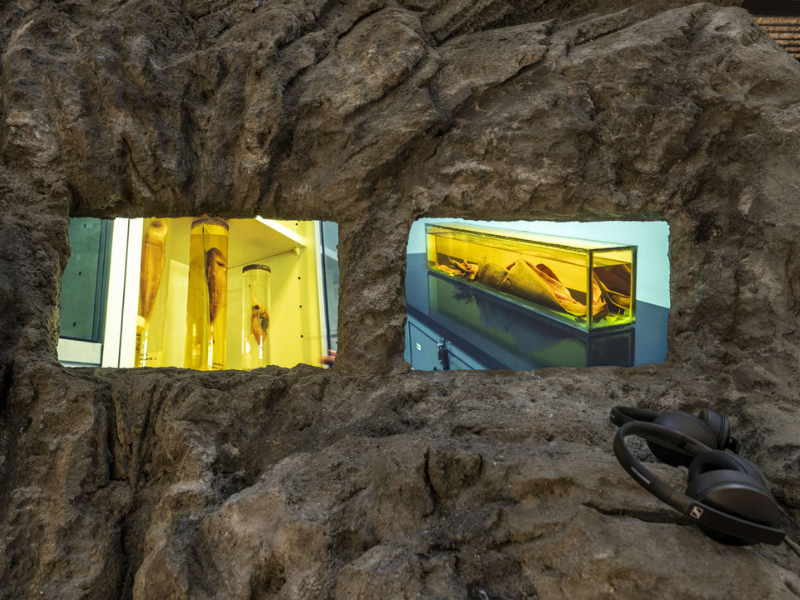Ciguatera at the Gulbenkian
 2025-04-15 (IPMA)
2025-04-15 (IPMA)
Until July 28, the exhibition CIGUATERA by artist Diana Policarpo will be on display at the Centro de Arte Moderna (CAM) Gulbenkian.
A visual artist and composer, currently working across visual arts, electroacoustic music, and multimedia performance, Diana presents this exhibition at CAM, which also stems from a collaboration with biologists from the Portuguese Institute for the Sea and Atmosphere (IPMA) who study Ciguatera.
Ciguatera is a form of food poisoning caused by the consumption of fish contaminated with ciguatoxins. Ciguatoxins are potent neurotoxins produced by benthic microalgae of the genera Gambierdiscus and Fukuyoa (dinoflagellates), which are common in tropical regions (the South Pacific and the Caribbean) and have now also been found in Portugal, particularly in the Autonomous Region of Madeira and especially in the Savage Islands (Ilhas Selvagens).
These toxins enter the food chain through herbivorous fish that feed on macroalgae colonized by the toxic dinoflagellates. They are then transmitted, transformed, and accumulated along the marine food chain until they reach humans. The symptoms of Ciguatera are varied, including gastrointestinal, neurological, and cardiovascular issues, appearing up to 30 hours after eating the contaminated fish, and may last from weeks to years. The most characteristic symptom is the reversal of temperature sensations (allodynia).

